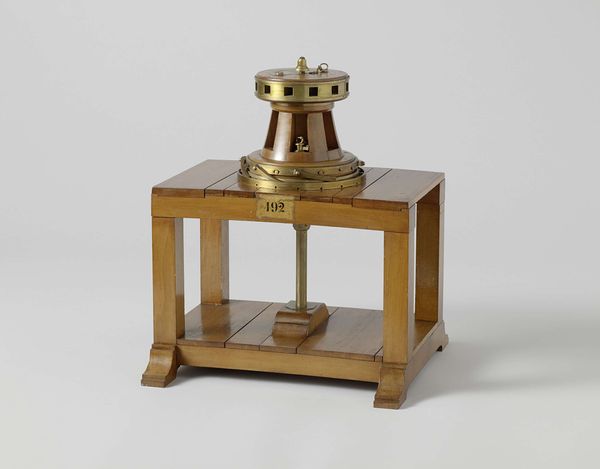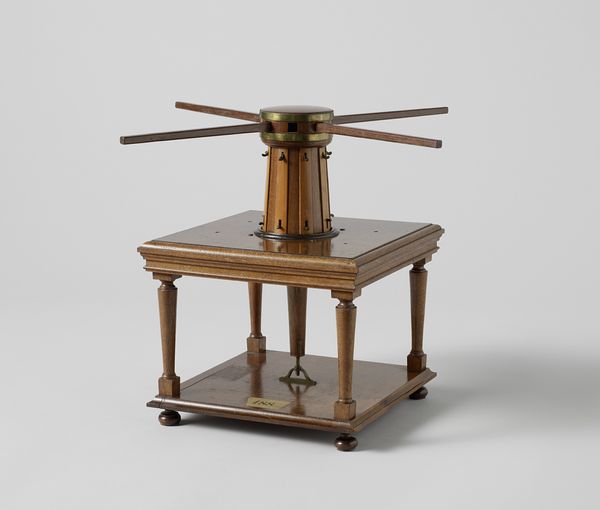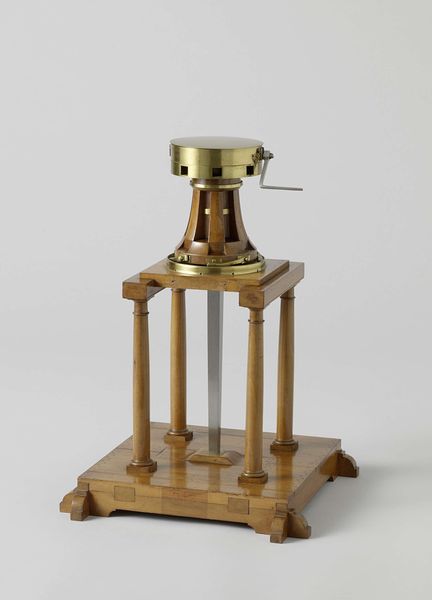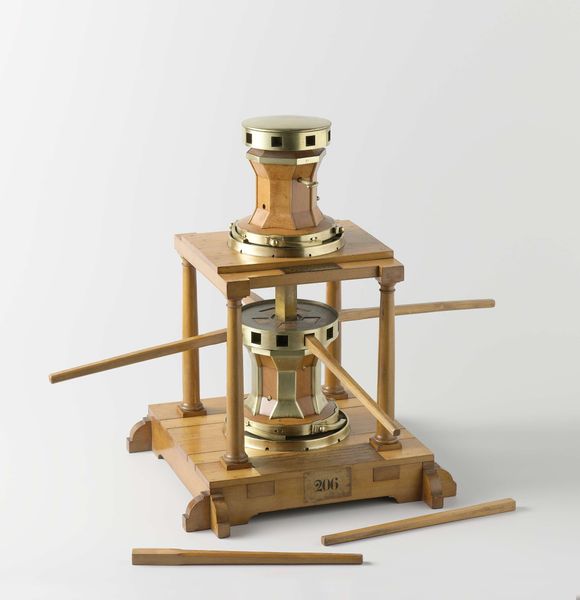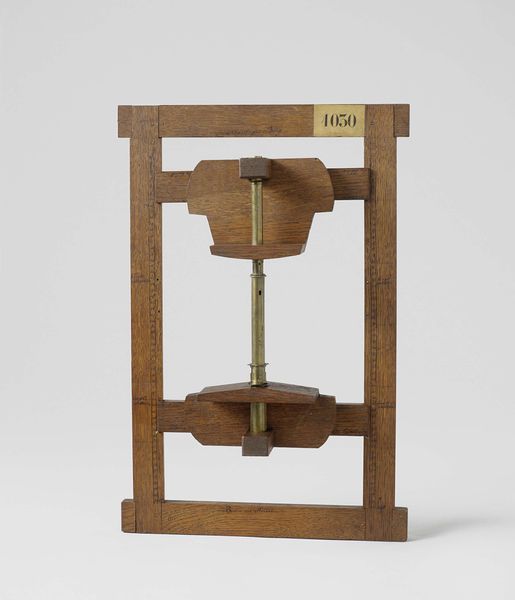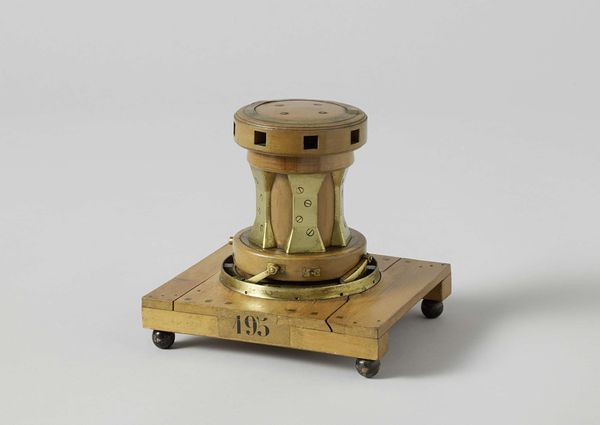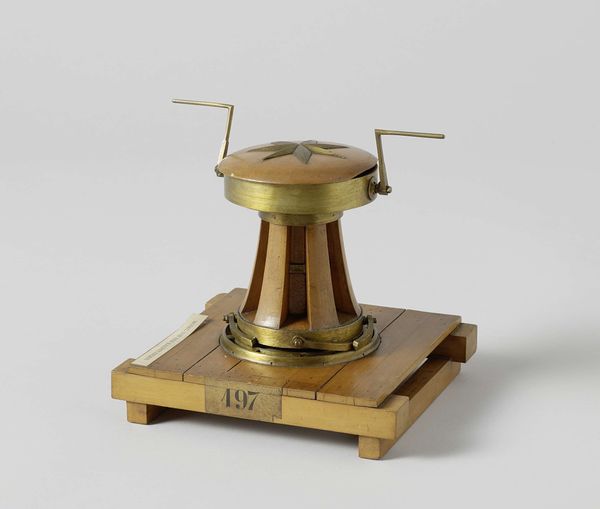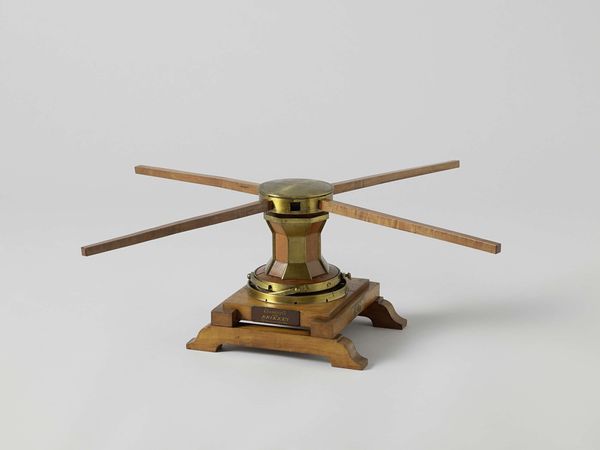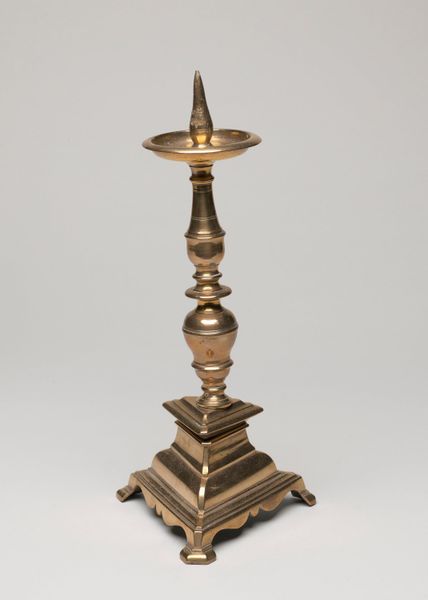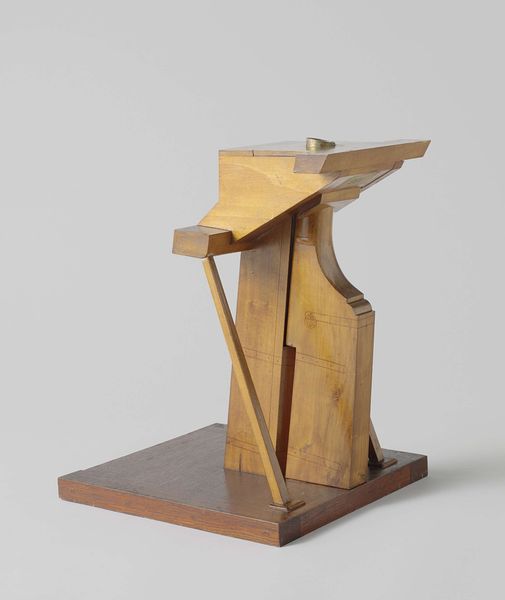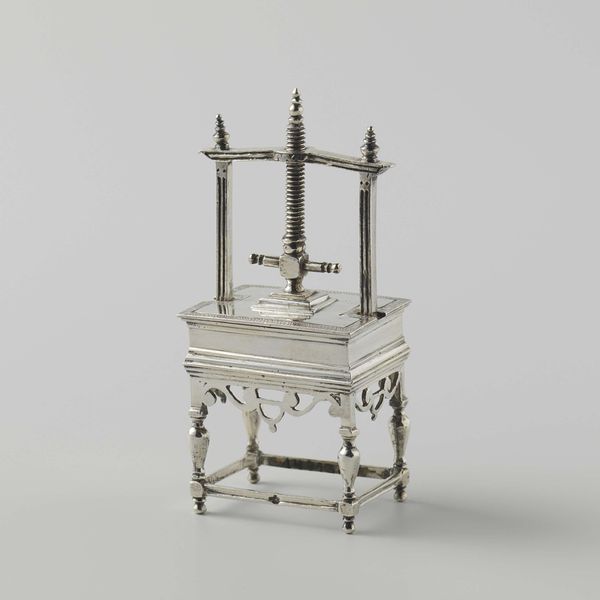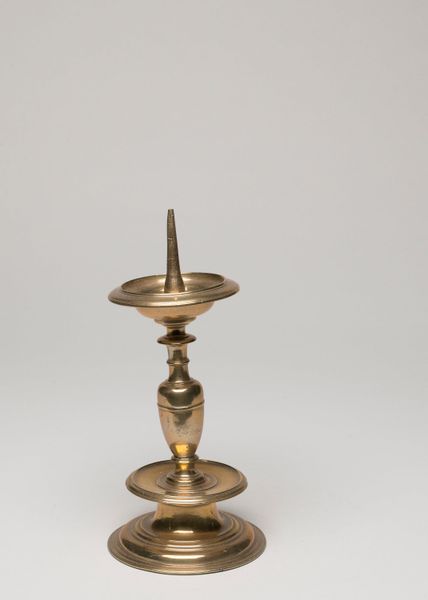
metal, sculpture, wood
#
metal
#
sculpture
#
geometric
#
sculpture
#
wood
Dimensions: model height 38.5 cm, model width 39.5 cm, model depth 28 cm, packaging capsule height 45.7 cm, packaging capsule width 82.3 cm, packaging capsule depth 33.5 cm
Copyright: Rijks Museum: Open Domain
Curator: Standing before us is the "Model of a Double Capstan," created around 1821 by the Rijkswerf Vlissingen. It's a striking object composed of wood and metal. Editor: My immediate impression is one of structural elegance. The repetition of geometric forms is both pleasing and… well, practical-looking, but still somehow strange. Curator: Indeed. Considering this piece as a product of a Royal Dockyard informs its function as both a demonstration object and a symbol of industrial innovation. Capstans, essentially winches used on ships, represented crucial technology for maritime power. This model embodies labor, skill, and maritime authority. Editor: It's easy to get lost in the aesthetic, but we should contextualize this model within broader systems of power. Capstans relied on manual labor, often exploited and dehumanized. This object isn't just about technical prowess, it's linked to global trade networks built on the backs of those whose work remains largely invisible in art history. How are these systems sustained, and how did they play out? Curator: Absolutely. The materials themselves are telling. Wood and metal are juxtaposed to highlight the integral components of shipbuilding. The contrast shows both craftsmanship and function, while the scale is ideal for display, yet retains detailed precision, indicating an intended user that requires highly specialized knowledge. Editor: I am very interested by its function as a tool of colonialism too; each time a sailor uses this kind of a winch they participate in it and extend a political goal and stance by force. By appreciating its engineering and material assembly, are we also validating exploitation that allows some empires to become prominent? Curator: That’s the crux of the issue, isn’t it? Recognizing the beautiful craftsmanship and engineering of the piece shouldn’t negate the social injustices to which the mechanism was historically linked. It's about holding two seemingly contradictory truths simultaneously. Editor: In that light, this is more than an historical model. I find it relevant today; to analyze and expose power structures around global material networks as a critical social practice. Curator: I agree completely. I would say, in reflecting on the "Model of a Double Capstan," we uncover its relevance far beyond its construction as a demonstration of a practical nautical innovation. We see a testament to human innovation and an indictment of exploitative practices that we, to this day, must learn how to deconstruct.
Comments
No comments
Be the first to comment and join the conversation on the ultimate creative platform.
